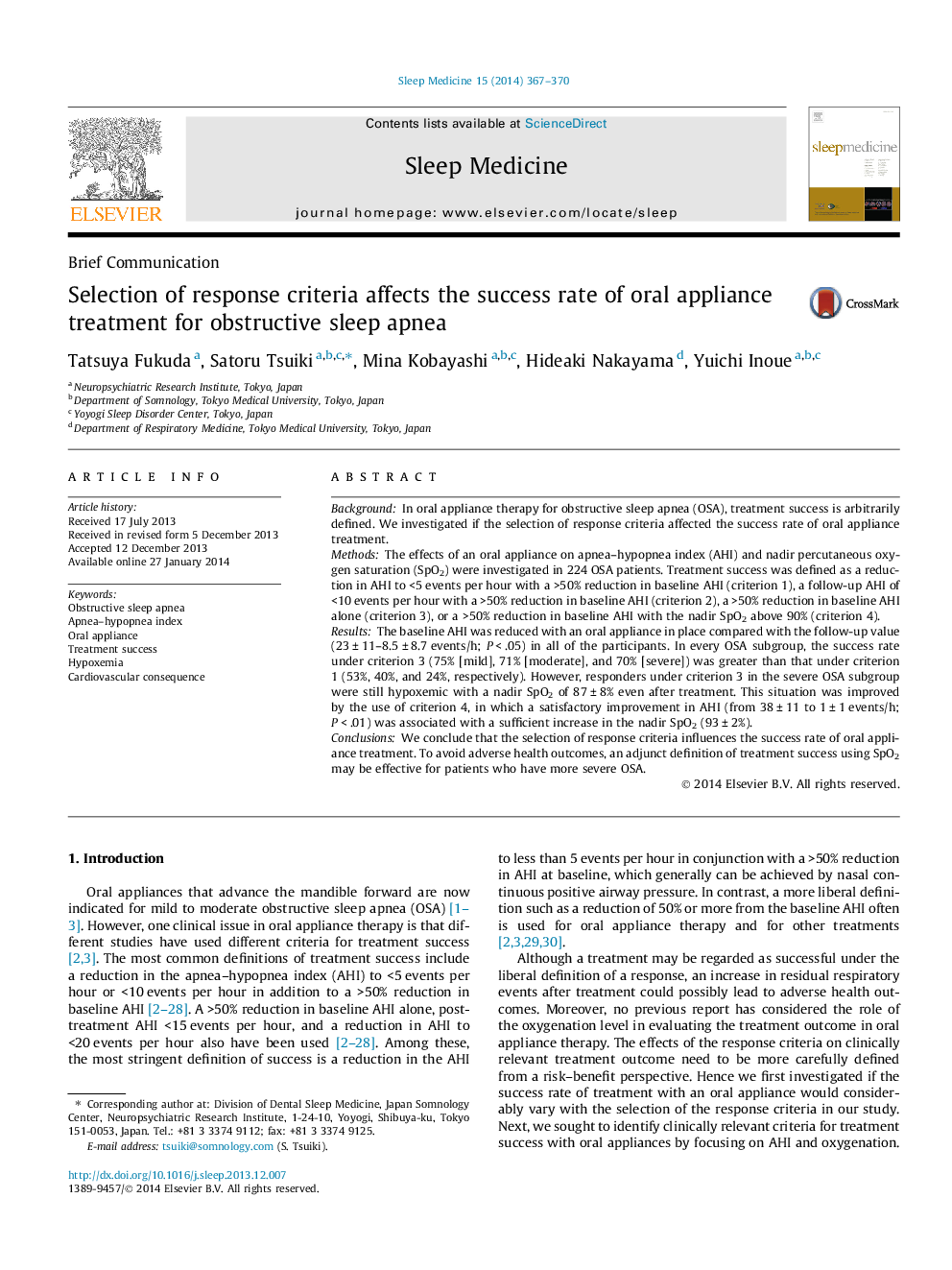| کد مقاله | کد نشریه | سال انتشار | مقاله انگلیسی | نسخه تمام متن |
|---|---|---|---|---|
| 6061001 | 1200252 | 2014 | 4 صفحه PDF | دانلود رایگان |
- The success rate of oral appliance therapy for obstructive sleep apnea greatly varies.
- The selection of response criteria influences the success rate of the treatment.
- Treatment success under liberal criteria does not always reflect relevant outcomes.
- Patients who receive successful treatment under liberal criteria can be hypoxemic even after treatment.
- An adjunct definition of treatment success using nadir percutaneous oxygen may be effective.
BackgroundIn oral appliance therapy for obstructive sleep apnea (OSA), treatment success is arbitrarily defined. We investigated if the selection of response criteria affected the success rate of oral appliance treatment.MethodsThe effects of an oral appliance on apnea-hypopnea index (AHI) and nadir percutaneous oxygen saturation (SpO2) were investigated in 224 OSA patients. Treatment success was defined as a reduction in AHI to <5 events per hour with a >50% reduction in baseline AHI (criterion 1), a follow-up AHI of <10 events per hour with a >50% reduction in baseline AHI (criterion 2), a >50% reduction in baseline AHI alone (criterion 3), or a >50% reduction in baseline AHI with the nadir SpO2 above 90% (criterion 4).ResultsThe baseline AHI was reduced with an oral appliance in place compared with the follow-up value (23 ± 11-8.5 ± 8.7 events/h; P < .05) in all of the participants. In every OSA subgroup, the success rate under criterion 3 (75% [mild], 71% [moderate], and 70% [severe]) was greater than that under criterion 1 (53%, 40%, and 24%, respectively). However, responders under criterion 3 in the severe OSA subgroup were still hypoxemic with a nadir SpO2 of 87 ± 8% even after treatment. This situation was improved by the use of criterion 4, in which a satisfactory improvement in AHI (from 38 ± 11 to 1 ± 1 events/h; P < .01) was associated with a sufficient increase in the nadir SpO2 (93 ± 2%).ConclusionsWe conclude that the selection of response criteria influences the success rate of oral appliance treatment. To avoid adverse health outcomes, an adjunct definition of treatment success using SpO2 may be effective for patients who have more severe OSA.
Journal: Sleep Medicine - Volume 15, Issue 3, March 2014, Pages 367-370
